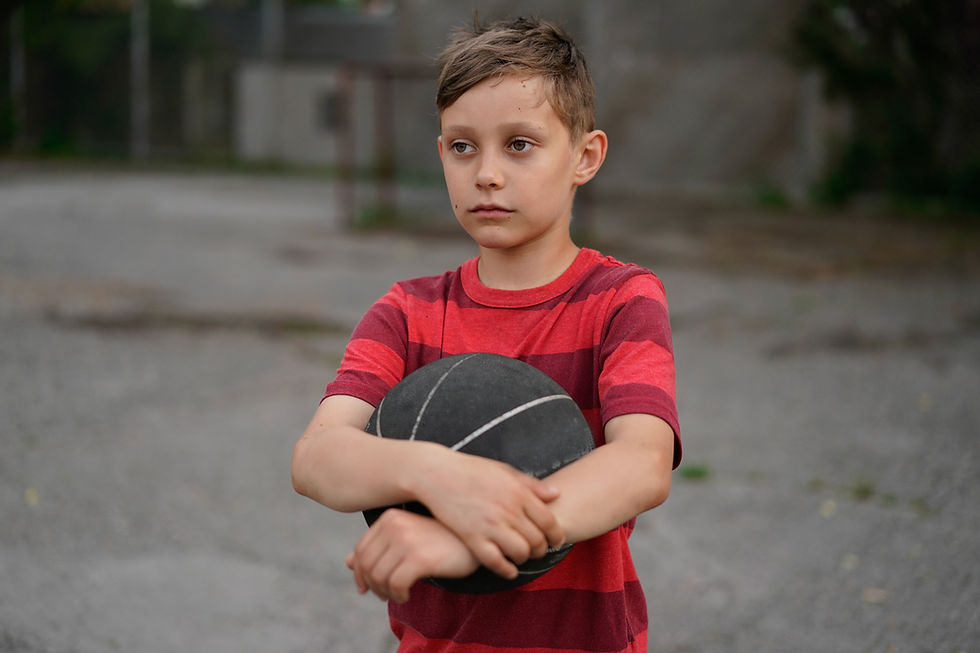SOCIAL INTELLIGENCE BUILDING BLOCKS
- adinalisw

- Nov 3, 2021
- 4 min read
The most recent blogs have offered information and tools for managing emotions and building self- confidence. When students know how to handle difficult emotions, they are less likely to deal with them by taking their feelings out on others. When students know how to feel good about themselves through positive means, they are less likely to do so at others’ expense. They therefore have some tools that can lead to healthy relationships, and are ready to develop even more social awareness and skills towards that end.
This blog will focus on fulfilling the first objective of the social awareness competency: to “recognize, identify and empathize with the feelings and perspectives of others”. We will also address the fourth objective of that competency: to “read social cues and respond constructively.”
Students have been building tools to increase their self-awareness. These tools can be applied to building awareness of those around us who experience the same things.
It is helpful to remind students, that we all experience emotions. Just as we have been noticing and learning about our own feelings through observing our bodies and voices, we can learn to observe others’ voices and bodies to recognize and identify how others might be feeling.
One activity that can help students do so, is by showing them photos of people experiencing a variety of emotions, and asking them to identify what they might be feeling. Encourage them to look at facial expressions, posture, and tension in their bodies. While there are variations in the ways people express their emotions, this activity reinforces the idea that others experience emotions, and the importance of using our powers of observation. Students can also choose characters from books or historical figures and draw pictures showing facial expressions and posture to depict what they might be feeling.
As we have discussed in previous blogs, we are often unaware of our feelings and the effects they have. This includes messages that our bodies and voices can convey to others. Students can benefit from becoming aware of those messages. One activity toward this end is to have a student convey a message with his or her body alone. The other students can try to determine what that message is. You can discuss some general body language for the “actor” to use and for the “guessers” to think about, such as eye contact or lack thereof, open or closed arms, and leaning towards or away from other students.
We also give messages with the ways in which we use our voices. You can ask different students to say “hello”, conveying a number of messages, using a variety of speeds, volume levels and pitches. An example would be saying “hello” quickly, loudly and high, conveying “I’m so glad to meet you”, and then slowly, quietly and low, conveying “I really don’t want to be here”.
Once students become aware of others’ emotions, we can help them make choices as to what they can do with that awareness. We can help students notice others’ messages and use them as social cues to determine how to best respond. If a student notices another student giving a message that they want to be left alone, the noticing student can respond by giving the other student the space he or she needs. If a student is standing close by another group of students and watching, the group might notice that the student wants to join them, which they could ask him or her to do.
Students can be reminded that we are all trying to make our best choices but that it is not always easy to do so. They can build empathy for others, by being helped to understand that others’ negative actions are often based on assumptions that they have not yet edited, leading to feelings that they don’t yet know how to handle. An example of this would be one student ignoring another student due to absorption in a negative feeling. While we may be affected by these choices, it can help us to get less upset if we understand their source and that they are not intentionally directed at us.
An activity to further build empathy, is to have one student choose an emotion to express as they slowly move their bodies. The rest of the class can act as the mirror for that student, following the movements exactly. This gives an opportunity to “step into the emotional shoes” of another student. A discussion could follow about what situations and assumptions could lead to an emotion like that. The class could write, draw or role-play situations that might lead to those assumptions and emotions, reinforcing the universality of these emotions.
Additionally, a discussion could ensue that explored what students might like to happen if they were feeling certain emotions. Students could explore a range of options including getting a hug, having someone to talk to about the feeling and being given time alone.
Students can be helped to understand that we all have ways in which we wish others would respond to and treat us. They can begin to explore the possibility of embodying the golden rule, learning that they can treat others the way they wish others treated them. The next blog will take this possibility further, examining the next steps in building social intelligence.









Comments